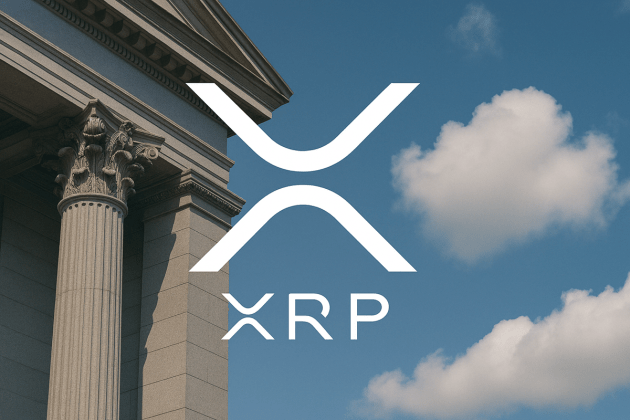Masternode hosting enables one to engage with cryptocurrencies on a deeper level. Users can play a pivotal role in the blockchain network’s operations, often earning passive income in return. However, this approach requires some technical knowledge and a steep initial investment to kick off.
While ordinary nodes in blockchain networks are primarily responsible for transaction validation, masternodes carry out extra responsibilities, such as enabling fast transactions and taking part in network’s governance decisions. Horizon is a well-known project utilizing masternodes.
This article explains what masternodes are and how they function, multiple ways to earn from operating masternodes, the difference between masternodes and other passive income strategies in crypto, and the risks associated with running masternodes.
What are masternodes, and how do they work?
In a blockchain network, masternodes are specialized nodes that go beyond the basic functions of regular nodes. Let’s understand how masternodes differ from their regular counterparts:
Regular nodes vs. masternodes
Regular nodes are independent computers that relay and validate transactions while storing and maintaining a copy of the blockchain ledger. Unlike regular nodes, masternodes perform functions such as facilitating speedy transactions, boosting privacy and taking part in governance decisions, and providing additional services like decentralized storage or data verification.
What is the requirement to become a masternode
To become a masternode, a user needs to acquire a financial stake in the network by locking a certain amount of the network’s cryptocurrency as collateral. For instance, to operate a Dash masternode, one needs to lock 1,000 Dash (DASH).
Thereafter, one needs to configure a dedicated computer inside a blockchain network and synchronize it with the blockchain ledger. They need to ensure it meets the network’s minimum requirements for processing power, memory and storage.
Once the masternode software is installed and configured, one needs to activate the masternode using the collateral transaction ID and output index. They monitor the masternode’s performance and ensure it remains online and synchronized with the blockchain network.
Rewards for masternodes
In return for servicing the network, masternode operators get a percentage of the transaction fees collected by the network or block rewards generated by the blockchain. For masternode operators, this consistent flow of incentives acts as a passive source of income, encouraging them to keep contributing to the upkeep of the network’s security and smooth operations.
Rewards accrued by masternodes depend on the total number of masternodes active in the network and the framework in place for reward distribution.
Multiple ways to earn as a masternode
Earning through masternodes involves multiple avenues, each tied to the specific functionalities and services provided by the masternode within the blockchain network. Here are the different ways to earn money using masternodes:
Block rewards
Masternodes receive a portion of the block rewards generated by the network. This reward is typically shared between miners (or stakers) and masternode operators, incentivizing both to support the network.
Transaction fees
As masternodes process and validate transactions, they earn a share of the transaction fees collected by the network. This is a direct reward for their role in maintaining the blockchain’s efficiency and security.
Service fees
Some blockchain networks offer additional services, such as instant transactions or enhanced privacy features, through masternodes. Users may pay extra fees for these services, which are then distributed to the masternode operators providing these functionalities.
Governance participation
Masternode operators can vote on proposals and network upgrades in networks with decentralized governance. Projects may reward masternode operators for their participation in governance, ensuring active engagement in the decision-making process.
Staking rewards
In a few networks, masternodes might also participate in staking. By staking their collateral, masternode operators can earn rewards similar to traditional staking mechanisms, providing another layer of income. Energi, for instance, provides staking rewards to masternodes.
Running multiple masternodes
Operators with significant resources can set up and run multiple masternodes across different networks or within the same network, multiplying their earnings. This requires substantial initial investment and technical expertise but can yield higher returns. Horizen network allows masternode operators to increase their engagement and revenues within the network.
Difference between masternodes and other passive income strategies
When considering passive income strategies in the cryptocurrency space, masternodes are often compared to other popular methods such as staking, yield farming and liquidity mining. Each strategy has its unique advantages and risks, making it essential to understand their differences to make informed investment decisions.

Risks associated with running masternodes
Operating a masternode comes with various risks, which potential operators should carefully consider before investing. Here are some risks they may confront:
Market volatility
The value of the cryptocurrency used as collateral can fluctuate significantly. A drop in the coin’s price may result in substantial financial losses, reducing the overall return on investment, or ROI.
Network security
Although masternodes enhance network security, they are still susceptible to cyberattacks, such as distributed denial-or-service (DDoS) attacks or exploits targeting the masternode software.
Technical risks
Running a masternode requires technical expertise. Misconfigurations, software bugs or hardware failures can result in downtime or penalties, which can affect earnings.
Operational costs
The cost of running a masternode, which may include the costst of hardware and power, can be significant. If the earnings do not cover these costs, the operator may incur losses.
Lock-up periods
The collateral used to run a masternode is usually locked up and cannot be easily liquidated. This lack of liquidity can be a risk if the operator needs to access funds quickly or if the market value of the collateral declines.
Competition
As more masternodes join the network, the rewards per masternode may decrease due to increased competition. This dilution of rewards can affect profitability.
Downtime penalties
Many networks impose penalties or slash rewards if a masternode experiences downtime or fails to meet performance standards. Ensuring continuous operation and connectivity is vital when running a masternode.
Regulatory risks
Cryptocurrency regulations are still evolving, and changes in regulatory frameworks can impact the legality or profitability of operating a masternode. Operators must stay informed about regulatory developments in their jurisdiction.
By understanding and mitigating these risks, masternode operators can better protect their investments and maximize their chances of success.











